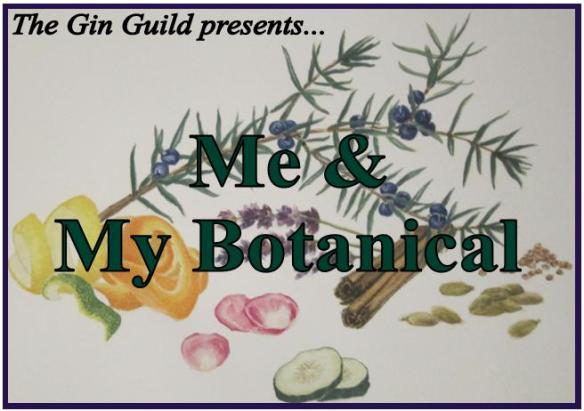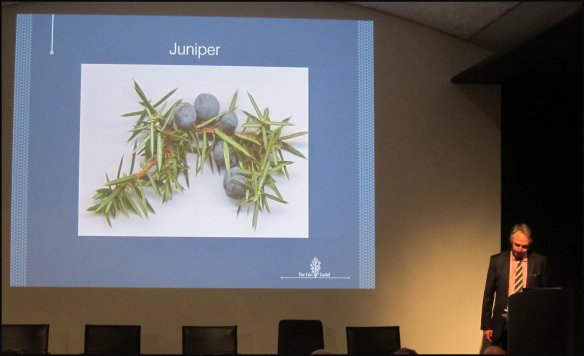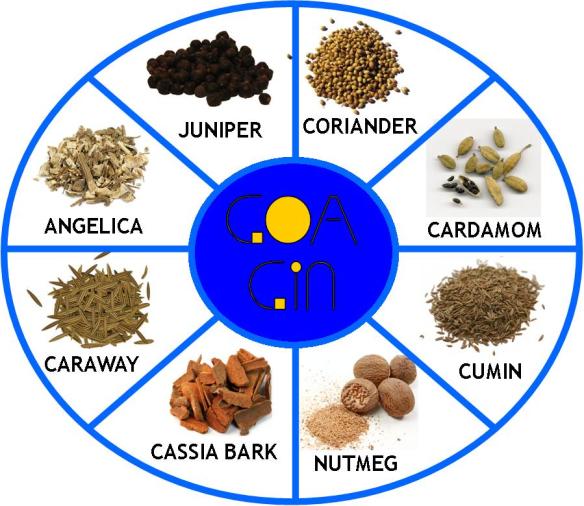After a busy week at the beginning of October with the London Gin Summit and Craft Distilling Expo, I decided to make it a quiet London Cocktail Week for me this year. Having said that, at least one event that I definitely didn’t want to miss was The Gin Guild’s “Me and My Botanical” event, which involved five of the UK’s top distillers.
We kicked off with Tom Nichols…

Tom Nichol – Tanqueray
Tom Nichol (Tanqueray Gordons) – Chamomile
Tom discussed his fondness for this daisy flower, which he uses in Tanqueray Ten and that Joanne Moore uses in Bloom; both described by Tom as floral gins. Up until 10 years ago, it was quite unusual to find chamomile being used as a gin botanical. Looking at the flower itself, it is the centre that contains the most oils..
.
Charles Maxwell (Thames DIstillers) – Juniper & Liquorice
Juniper (Juniperus Communis)
- The essential ingredient for gin, which is almost exclusively grown wild (although cultivated in the Netherlands).
- Historically, it is closely linked with traditional medicine and is still being studied today.
- Prior to World War One, juniper grew in abundance around the downs and surrounding areas of London, which is one of the reasons that London became a hub for gin manufacturers.
- These juniper bushes were removed so that the space could be used for agriculture to ease food shortages during the war.
- In the early days of gin, the botanicals would have been used to cover the taste of poor-quality spirit as much as to add a distinguished and complex flavour.
Liquorice
- Also known as “sweet root”, liquorice contains a compound 50 times sweeter than cane sugar.
- It contains glycyrrhizin, which is toxic with excessive consumption and, hence, is heavily regulated, especially in the USA.
- The jury is out as to whether or not glycyrrhizin acid actually passes over with distillation.
- Using liquorice root in stick vs. powdered form creates a slightly different effect.
- But both add a complex, sweet note and a earthy softness.
.
Desmond Payne (Beefeater) – Citrus & Tea
- Citrus is an important botanical that gives upfront, clean, fresh and sometimes sharp notes to gin.
- Lemons and oranges are the most popular types used in gin production.
- A distiller’s choice of using Italian vs. Spanish lemons and sweet vs. bitter oranges impacts upon a gin’s flavour.
- Other citrus choices include lime, grapefruit, tangerine and pommelo.
.
He then outlined his five categories of gin:
Juniper-led;
Citrus-led;
Spice-led;
Herbal-led; and
Floral-led.
On the subject of drinking gin neat, Desmond said:
“(The) Evidence of a good gin is that you can drink it on its own.”
Which is a thought that I agree with; in general, if a gin tastes good on its own, it is more likely to mix well in a Martini, Negroni or with Tonic.
Tea
- Desmond was inspired to use tea as a gin botanical after he tried Beefeater mixed with chilled green tea.
- This happened after the tonic that was available in Japan, where he was at the time, was not bitter enough (quinine is heavily regulated in Japan).
- In response, Beefeater 24 incorporates two teas into its botanical mix.
- Tea mixes so well with other ingredients because it has very large molecules, which “fit in” well with other flavours.
Peter McKay (Alcohols Limited) – Coriander & Orris Root
- Coriander is seen as the second most important botanical and is used both as a herb (leaf) and a spice (seed).
- Few gins exclude coriander from their recipe, but an example is Van Wees 3 Corners Gin (made using juniper & lemon).
- Key growing areas are South and East Europe, South-west Asia, India and North Africa.
- In 2013, the best coriander is coming from Bulgaria. The reason? Its higher oil content, which is key when this year’s crop is unusually low in its contents of essential oils.
Peter also mentioned how different levels of coriander in conjunction with other botanicals impact upon a gin’s flavours. For example:
High Coriander + Angelica = Dryer Character
Low Coriander + High Juniper + Citrus = Sweeter Character
Orris Root
- This acts as a binder or catalyst for the other flavours of gin botanicals (angelica and jasmine will also do the job).
- It is made from the underground stem of the florentine iris.
- These plants grow well in fine and sandy soil and take three years to cultivate; they are usually harvested in the dry month of August.
- Plants are harvested by hand and, once the stem and leaves are cut off, the roots are planted.
- The stem is then peeled and then dried several times in the open air.
Nik Fordham (Bombay Sapphire) – Angelica & Spice
Angelica
- There are 60 types, but Angelica Archangelica is the type used in gin production.
- It thrives in damp conditions and is harvested after its second year, once it has flowered and then died back.
- The seed provides fragrance, whereas the stem is often crystallized and turned into a sweet or mixed with reindeer milk.
- The root has some juniper and earthy flavours and aromas.
Nik also spoke a little about cinnamon, cubeb berries and grains of paradise.
Question Time
The panel then invited questions from the floor, chaired by Simon Difford.
They spoke a little about terroir, where botanicals are sourced from. Largely, it seems that the source of the botanicals is subject to change, based on quality. Peter mentioned they had recently switched their supply of coriander from Russia to Bulgaria.
When asked about the rationale for using only “Juniperus Communis” (the only type of juniper allowed in EU production of gin), given that some US gins use other varieties to great effect, the panel gave a mixed response, ranging from:
- “rules is rules”;
- Communis is the most common variety found in Europe;
- One other species (Juniperus Oxideridus) has been linked to poisonings; and
- Potential protectionism, to stop US imports of gin.
Based on these comments, amongst others, it strikes me that the most likely explanation is that when the rules were written, the use of Western Juniper, Utah Juniper, and Rocky Mt. Juniper was relatively unknown. As the document is a technical one, it was not sufficient to simply say gin should be flavoured with “Juniper” – a species need to be specified, too; hence, Juniperus Communis.
































